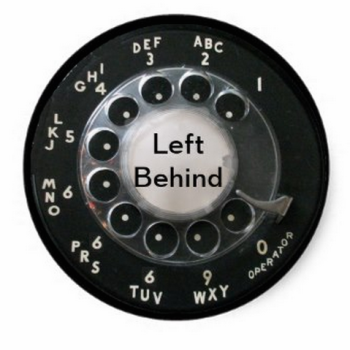The building I work in also provides office space to creatures from another universe. We work upstairs; they work downstairs. We smile and nod as we pass in the lobby or on the way to the vending machines, but we have only the vaguest sense of who they are and what they do and that’s just the way we like it.
We’re in news. They’re in advertising. We keep separate.
This is a cardinal rule in print journalism. Advertising and news have to be separate and independent of one another or the news loses all credibility.
We have ads in the paper for all the local GM dealers and we have articles in the paper covering the strike at the local GM plant. We have ads in the paper touting the latest no-down-payment, adjustable rate mortgages, and we have articles in the paper covering the effects of the subprime lending collapse. Political candidates buy campaign ads in the newspaper and the newspaper covers those political campaigns. The meaning of those articles would be lost or tainted if our readers had grounds to suspect that the selling of those ads had any influence over the substance of our reporting.
So this rule is important. Non-negotiable. Inviolable. The wall of separation between news and advertising in print journalism is a bearing wall — poke holes in it and the whole structure will collapse.
That’s how print journalism works. In the wild west frontier of “New Media” online journalism, things seem to be a bit more … flexible.
For a look at the New Media future, take a peek at IndyStar.com. Check out the article “Big Ten honors IU’s Gordon.” It’s an otherwise unremarkable account of Indiana’s freshman guard earning conference honors in basketball. “Gordon scored 33 points against Chattanooga last week, breaking George McGinnis’ school record for most points in a debut game …”
But what’s this? The word “game” there is underlined and in green text. It seems to be a link. Context and convention would suggest, if you had to guess, that this link would take readers to an article on the Indiana-Chattanooga basketball game so they could read more about Eric Gordon’s auspicious Hoosiers debut and his 7-for-11 shooting from behind the arc. But hover your mouse over the link and you’ll instead get a tool-tip pop-up box touting the X-Box 360. Click on the link and it takes you to the X-Box 360 site. The word “game” — within the article — is an ad for a gaming system.
Let’s try another one: “$66M to aid IU, Kenya anti-AIDS program.”
First sentence: “The federal government has awarded a $60 million five-year grant to a partnership between the Indiana University School of Medicine and a Kenyan university that fights HIV/AIDS in that country.” The word “government” there is a link, taking the reader, inexplicably, to this advertising site for HP’s BladeSystem c3000.
Second sentence: “Currently the program provides care for about 52,000 Kenyans who have HIV.” “Program” is a link to this ad for something called AMD Virtual Experience 2.0, which I guess is a computer program, but not a computer program that has anything to do with Kenyan anti-AIDS efforts.
Fourth sentence: “Indiana University School of Medicine will also donate $6 million over the next five years to the effort, housed at the Moi University Teaching and Referral Hospital in Eldoret, Kenya.” The link word there is “Kenya,” which takes readers to this ad for American Express’ bonus miles travel rewards program. The elliptical connection there being, I suppose, that one could use one’s double SkyMiles to travel anywhere, including to Kenya. Or something.
IndyStar.com’s ads are provided via Vibrant Media, which calls itself “the in-text advertising leaders.” Their approach is similar to the Google Ads that you’ll see here in the sidebar to the right, except of course that Vibrant’s ads do not appear in a separate sidebar identified as advertising, they appear in the text itself. These ads breach the wall of separation between content and advertising. They do so proudly and zealously — that’s their selling point.
On a page dealing with their “editorial policy,” Vibrant makes their case for why these embedded ads — this seamless integration of news and advertising — doesn’t constitute a threat to the independence of news from advertising:
Vibrant In-Text Advertising cannot influence online editorial content. The IntelliTXT technology is implemented in real-time and deployed after editorial content is produced and posted online. Similar to many online advertising solutions, this is an automated process that cannot influence, or be influenced, by the editorial team within Vibrant Media’s partner publications.
I appreciate this attempt to acknowledge the ethical questions involved, but I think my response to that would be, “We’ve already established that, madam. Now we’re just haggling over price.” In-text advertising, in my view, opens a door that should never be opened and blends two separate universes that should never be blended. This is Bad News for news.
But perhaps I’m overreacting. What do you think? Would you like to see your preferred online news sources — The New York Times, The Washington Post, Talking Points Memo — follow the Star’s lead and begin embedding in-text ads in the content of their news stories? Does this development worry you at all?











